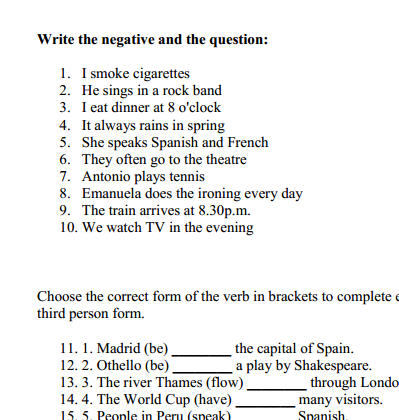Present Simple worksheet. Demonstrative adjectives indicate exactly which noun the speaker means and where it is (or they are) relative to the position of the speaker. If the noun in question is nearby, he uses this (singular) or these (plural). If the noun is out of the speaker’s reach, he uses that (singular) or those (plural). Then he always follows the demonstrative with any other accompanying adjectives in their proper order and finally, the noun.
What Is a Demonstrative Pronoun?
As mentioned before, demonstrative pronouns look exactly like demonstrative adjectives – this, that, these, those. But the difference between the adjective and the pronoun is that the adjective is always followed by a noun while the pronoun is not because it takes the place of the noun phrase. For example:
• The food you’re cooking smells delicious. --> That smells delicious.
• The pretzel-like yoga move we’re doing really hurts. --> This really hurts.
• What is the strange, polka-dotted, Sasquatch-like creature coming toward us? --> What is that?
• The cockroaches currently giving birth under our kitchen sink are totally gross. --> Those are totally gross.
• The delicious, pink petit fours on my plate are my favorites. --> These are my favorites.
What Is a Demonstrative Pronoun?
As mentioned before, demonstrative pronouns look exactly like demonstrative adjectives – this, that, these, those. But the difference between the adjective and the pronoun is that the adjective is always followed by a noun while the pronoun is not because it takes the place of the noun phrase. For example:
• The food you’re cooking smells delicious. --> That smells delicious.
• The pretzel-like yoga move we’re doing really hurts. --> This really hurts.
• What is the strange, polka-dotted, Sasquatch-like creature coming toward us? --> What is that?
• The cockroaches currently giving birth under our kitchen sink are totally gross. --> Those are totally gross.
• The delicious, pink petit fours on my plate are my favorites. --> These are my favorites.
